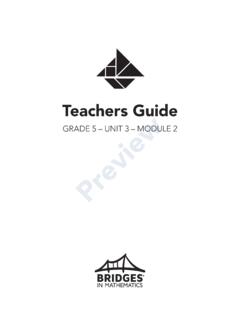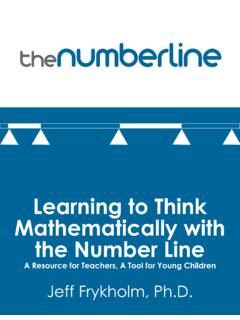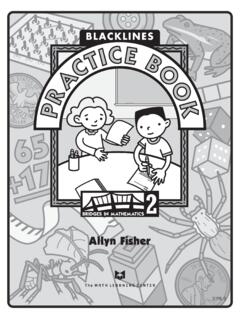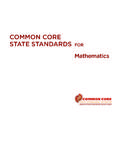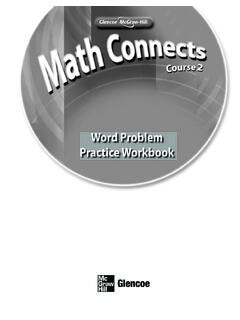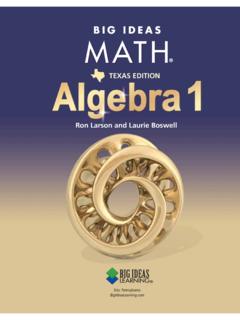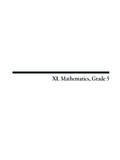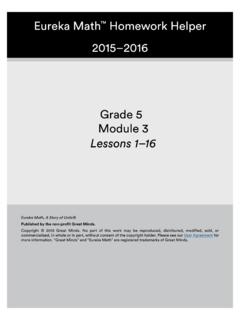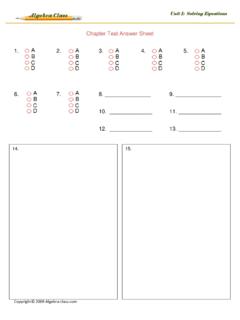Transcription of Bridges in Mathematics Grade 5 Unit 4 Module 1
1 Teachers GuideGRADE 5 UNIT 4 Module 1 PreviewPreviewSession 1 Unit 4 Pre-Assessment 3 Session 2 The Product Game, Version 2 9 Session 3 Callie s Cake Pops 15 Session 4 Callie s Cake Pops Forum 23 Module 1 Multiplication & Division StrategiesTeacher MastersPages renumber with each 4 Pre-Assessment T1 Unit 4 Pre-Assessment Student Reflection Sheet
2 T3 Unit 4 Work Place Log T4 Work Place Guide 4A The Product Game, Version 2 T54A The Product Game, Version 2 Record Sheet T6 Callie s Cake Pops Forum Planner T7 Student Book PagesPage numbers correspond to those in the consumable & Decimal Review 113 Work Place Instructions 4A The Product Game, Version 2 114 Product Problems 115 Callie s Cake Pops 116 Multiplication Strategy 117 Box Puzzle Challenges 118 Home Connections PagesPage numbers correspond to those in the consumable Review 67 Thinking About Strategy
3 69 The Math Learning Center | in Mathematics Grade 5 Teachers GuidePreviewPreview The Math Learning Center | in Mathematics Grade 5 Teachers Guide1 Unit 4 Module 1 Multiplication & Division StrategiesOverviewModule 1 focuses on learning and applying various strategies for solving multiplication and division problems, and gives stu-dents opportunities to wrestle with the idea of multiplying decimals, as well as whole numbers, in the form of money amounts. Students participate in problem strings that highlight the relationships between multiplication and division; the Half-Tens facts; doubling and the connection between decimals, fractions, and whole numbers.
4 PlannerSession & Work Places IntroducedP&IPSMFWPAHCDPS ession 1 Unit 4 Pre-AssessmentThis session opens with a problem string that emphasizes the connection between multiplica-tion and division The teacher then introduces the Unit 4 Pre-Assessment and gives students the remainder of the session to work on it Session 2 The Product Game, Version 2 The session begins with a problem string emphasizing the Half-Tens facts as a strategy for multiplication Students reflect on the Unit 4 Pre-Assessment, and then the teacher introduces a new Work Place, The Product Game, Version 2 Work Place 4A The Product Game, Version 2 Students try to claim four spaces in a row by finding products of given 1- and 2-digit factors Session 3 Callie s Cake PopsThe session begins with a multiplication problem string that emphasizes the use of the doubling & halving strategy, modeled with arrays Then student pairs work on a set of problems in which they determine cost and profit for a fundraiser Session 4 Callie s Cake Pops ForumStudent share strategies for solving problems presented in Session 3 in a class math forum They spend the remainder of the session doing Work Places P&I Problems & Investigations, PS Problem String, MF Math Forum.
5 WP Work Place, A Assessment, HC Home Connection, DP Daily PracticeUnit 4 Module 1 Preview The Math Learning Center | in Mathematics Grade 5 Teachers Guide2 Unit 4 Module 1 IntroductionMaterials PreparationEach session includes a complete list of the materials you ll need to conduct the session, as well as notes about any preparation you ll need to do in advance. If you would like to prepare materi-als ahead of time for the entire Module , you can use this to-do s kDoneCopiesRun copies of Teacher Masters T1 T7 according to the instructions at the top of each master Run a single display copy of Student Book page 116 If students do not have their own Student Books, run a class set of Student Book p a g e s 113 118 If students do not have their own Home Connections books, run a class set of the assignments for this Module using pages 67 70 in the Home Connections Book Work Place PreparationPrepare the materials for Work Place 4A using the list of materials on the Work Place Guide (Teachers Masters T5)
6 Special ItemsGather a half-class set of chart paper for students prior to Session 4 Additional ResourcesPlease see this Module s Resources section of the Bridges Educator site for a collection of resources you can use with students to supplement your instruction Preview The Math Learning Center | in Mathematics Grade 5 Teachers Guide3 Unit 4 Module 1 Session 1 Unit 4 Pre AssessmentSummaryThis session opens with a problem string that emphasizes the connection between multiplica-tion and division The teacher then introduces the Unit 4 Pre-Assessment, and gives students the remainder of the session to complete it Finally, the teacher introduces and assigns the Number Review Home Connection Skills & Concepts Use the standard algorithm with fluency to multiply multi-digit whole numbers (5 NBT 5) Divide a 3 or 4-digit whole number by a 2-digit whole number using strategies based on place value, the properties of operations, or the relationship between multiplication and division (5 NBT 6) Multiply and divide decimals to hundredths, using concrete models or drawings and strategies based on the place value and properties of operations (5 NBT 7) Multiply a whole number by a fraction (5 NF 4a) Make sense of problems and persevere in solving them (5 MP 1)
7 Model with Mathematics (5 MP 4)MaterialsCopiesKit MaterialsClassroom MaterialsProblem String Boxes & Pencils student journalsAssessment Unit 4 Pre-AssessmentTM T1 T2 Unit 4 Pre-AssessmentHome Connection HC 67 68 Number ReviewDaily Practice S B 113 Fraction & Decimal ReviewHC Home Connection, SB Student Book, TM Teacher Master Copy instructions are located at the top of each teacher that you will need to score the Unit 4 Pre-Assessment before next session (See the Grade 5 Assessment Guide for scoring and intervention suggestions ) If you cannot mark the Unit 4 Pre-Assessment by Session 2, make room for reflection time during another session in this Module VocabularyAn asterisk [*] identifies those terms for which Word Resource Cards are *multiply*product*ratio table*rowstandard algorithmUnit 4 Module 1 Session 1 Preview The Math Learning Center | in Mathematics Grade 5 Teachers Guide4 Unit 4 Module 1 Session 1 Problem StringBoxes & Pencils1 Open the session by letting students know that today they will participate in a problem string and then they ll take the Unit 4 Pre-Assessment.
8 2 Have students put the date and heading Boxes & Pencils String on the next blank page of their journals. Then deliver the problem string. Pose each problem one at a time by reading the problem and writing the multiplication or division combination for the problem on the board. Give students time to work in their journals. Solicit and record all answers to a given problem, and then invite one or two students to share how they solved the problem. Model students strategies on ratio tables at the board or projector. Emphasize strategies that make use of multiplication to solve division The Math Learning Center | in Mathematics Grade 5 Teachers Guide5 Unit 4 Module 1 Session 1 Problem String Boxes & Pencils, Part 1 ProblemsSample Strategies & RecordingConnectionsMy favorite pencils come in boxes of 35, so I know that if I have one box, I have 35 pencils How many pencils would there be in 4 boxes?
9 4 35 Some students may solve the problem by skip-count-ing or using repeated addition This can be modeled on a ratio table as shown here Numberof BoxesNumberof Pencils123435701051401 35 = 352 35 = 703 35 = 1054 35 = 140+ 35 + 35 + 35+ 1 + 1 + 1 Because the problems in today s string are posed in context, this is a good opportunity to strengthen students under-standings of ratio tables You can do this by working with input from the class to write a multiplication equation off to the side to represent each entry on the table You should also be quite deliberate about marking the transition from one row to the next with a an arrow and the amount by which each entry changes By now, most students understand that on a ratio table, whatever happens on one side of the table has to be replicated on the other For example, if you multiply the number of boxes by 2, you have to multiply the number of pencils by 2 as well.
10 As illustrated on the second ratio table Some students may have over-generalized this to situations that involve addition, perhaps believing that if you add one box to the left side of the chart, you should add one pencil to the other side of the chart This is not the case, of course; adding 1 box of pencils to the left side of the chart is actually equivalent to adding 35 pencils to the other side of the chart If such confusion exists, you can bring it to light and work to resolve it by pressing students to explain why the numbers with which you ve labeled the arrows on the first ratio table are not the same o





